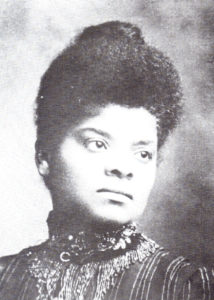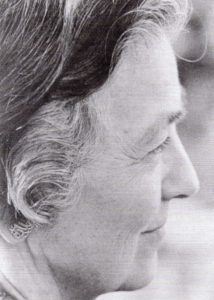

Women of Achievement
1987
HERITAGE
for a woman whose achievements still enrich our lives:
Ida B. Wells and Myra F. Dreifus
This year we honor posthumously two women who achievements still enrich our lives. Although the details of their lives appear dissimilar, they complement one another.
One was a Southerner who moved north to complete her life; the other was a Northerner who moved south. One was black, the other white. One was born in the 19th century, the other in the 20th. One was born a slave, the other free. One was Christian, the other Jewish. One had finished her work in Memphis before the other was even born — and although their lives overlapped for some 27 years in these United States, they never knew each other personally.
And yet they are strangely alike. One was repeatedly described as “militant,” “courageous,” “determined,” “impassioned,” and “aggressive” while the other was referred to as a “damn busybody,” a “fighter,” and as the “conscious of Memphis.” Each did what she could to address the problems of her day — and Memphis will never be the same again because of each of them.
Ida B. Wells was born in 1862, six months before the signing of the Emancipation Proclamation, to slave parents in Holly Springs, Mississippi. She was educated first at Rust College where her carpenter father was selected to the first Board of Trustees, and later at Fisk University. She was orphaned by Yellow Fever at 16, along with six younger brothers and sisters whom she raised.
Ida began her career as a teach in a one-room school in rural Mississippi; continued in the rural schools of Shelby County after she moved to Memphis in 1884; and was regarded as a competent and conscientious teach in the Memphis schools for seven more years.
When she was only 22 and traveling to her school at Woodstock in Shelby County, she took on the historic action of challenging discrimination against black passengers on railroad trains. Ida refused to comply when the conductor tried to remove her from the ladies’ car into a dingy smoking car with the rest of the black passengers. When he grabbed her arm she bit his hand! After the conductor and baggage man attempted to relocate her forcibly, she got off the train at the next stop, returned to Memphis, and sued the railroad for failing to provide the “equal” in “separate but equal” accommodations.
She prevailed in the local court and was awarded $500 in damages. But the railroad appealed the case and in 1887 the Supreme Court of Tennessee reversed the decision, charging the costs to a bitterly disappointed Ida.
That same year she discovered her journalistic abilities when she began to write at first for a church paper, and then for a small black Memphis newspaper, Free Speech and Headlight, later becoming editor and part owner. Articles criticizing the Memphis Board of Education for separate, inferior Negro schools led to her dismissal as a teacher in 1891. Unperturbed, she began to write under the pen name “Iola,” publishing details of unfair treatment of Negroes.
On March 9, 1892 when three young black businessmen were lynched in Memphis, Ida wrote in her newspaper that Negroes should leave the city. Many took her advice and she urged those that remained to boycott the street railway. For three months Ida’s scathing pen was turned on the white population of the city who allowed and condoned lynching and practiced racial hypocrisy. Her newspaper was blamed for paralyzing downtown business. Fury erupted one evening when an angry mob wrecked her press, destroyed her paper, and would have lynched her except that she happened to be in Philadelphia at the time covering a convention for her newspaper.
She never returned to Memphis. Instead she wrote and lectured in the cities of the North and East and throughout England, Scotland and Wales, becoming the most eloquent spokesperson in the international fight against lynching. She would continue her incredible crusade against black oppression in the pages of newspapers and on lecture platforms for the rest of her life.
Ida moved to Chicago after her marriage to Ferdinand Barnett, a prominent lawyer and journalist, and made that city her home until her death in 1931. Perhaps the most remarkable thing about Ida B. Wells is not that she fought lynching and other forms of cruelty, inhumanity and injustice. It is rather that she fought a lonely and almost single-handed fight, with the dedication of a crusader, long before other men or women of any race entered that arena.
Born in Flint, Michigan in 1904, Myra Finsterwald Dreifus, a woman described as both serene and impulsive, moved to Memphis with her husband Fred in 1936. At first she “tried the social bit.” A friend had told her, “You’ve got to learn to play cards, or you’ll be a lonely old woman. “Well, I tried it,” Myra later reported, “and finally I told my friend I’d take my chance with old age and loneliness.”
While raising three children, she soon became involved in many volunteer projects, including the Memphis Junior Red Cross and the National Council of Jewish Women. In the early 1960s, while president of the Mental Health Association (which she had helped to found — “we were trying to do something for disturbed children,” she said — she discovered widespread hunger in the schools.
Despite federal economic surveys showing that at least 40,000 Memphis children could qualify for free or reduced-rate lunches, fewer than 700 children were getting them. Even more startling was the discovery that surpluses of both food and money were being turned back to the National School Lunch Program while in grade school lunchrooms children without food were required to remain seated, seeing and smelling the food of their more fortunate peers until the lunch period was over.
Haunted by this discovery, Myra confronted clubs, church groups, women’s groups — anybody who might listen and help — and gradually, steadily the movement known as the Fund for Needy School Children surfaced as an organization able to sway politicians, school officials and a large segment of the public.
Between 1946 and the early 1970s, her small band of volunteers grew to almost 400 working in 57 schools, and the number of children enrolled in the Free Lunch Program increased from 700 to 25,500 children.
In 1967 Myra and her volunteers maneuvered the organization into the Shelby United Neighbors (forerunner of the United Way of Greater Memphis) despite the objection of some that they did not meet all agency requirements: they had no office, no salaried staff, no expenses!
Her movement still has no headquarters, no salaried employees, no regular meetings and almost no structure. In Myra’s words, “It remains a creative movement in which each volunteer can bring something special to the program.”
With the free lunch program set up, she and her volunteers worked on providing clothes, eyeglasses, breakfasts, milk formula and layettes for the poor.
Myra helped found the Riverview-Kansas Day Care Center and worked hard to build constructive and harmonious relations between the various communities that make up our city She chided at least one mayor publicly for campaigning on the promise to represent all the people of Memphis and then admittedly speaking for only the majority during a time of racial strife.
In December 1968, while attending a White House Conference on Food, Nutrition and Health, she suddenly realized that the conference wasn’t going to deal with the problem of hunger. In the midst of the session, she fired off a registered letter (written on plain notebook paper) to President Nixon, challenging him to declare a national emergency on hunger and to expand the food stamp program “so everybody could be eating by Christmas.”
Most of Myra’ efforts were visibly successful; some were not. But having done what she could to resolve a problem she reflected the same equanimity regardless of the outcome.
Myra Dreifus, more than any other one person in the remote or recent past, personified the ability to transcend all the barriers that frequently fragment our community — racial, economic, educational, political, religious, social — in her effort to make Memphis a better place for all of us. Actually, she did not so much transcend (meaning to rise above) them; rather she moved through them with serene determination, probably because for her they did not exist.
In her activist years, Myra referred to herself as a “professional volunteer.” Later she enjoyed continuing education so much her husband referred to her as a “perennial freshman.” Others called her “the Children’s Crusader.” She deserves to have all Memphis call her “friend.”
Myra Dreifus took her chances with old age, dying at 82 in December 1986. She was not lonely.
Our Heritage Award for the year 1987 honors jointly Ida B. Wells-Barnett and Myra Finsterwald Dreifus, who in doing what they could, discovered what a difference they could make. All stand tall in Memphis because we stand successively on the shoulders of these rather frail women with strong wills. We celebrate their well-lived lies, treasure their respective examples, and cherish their memory as “women of achievement.”

